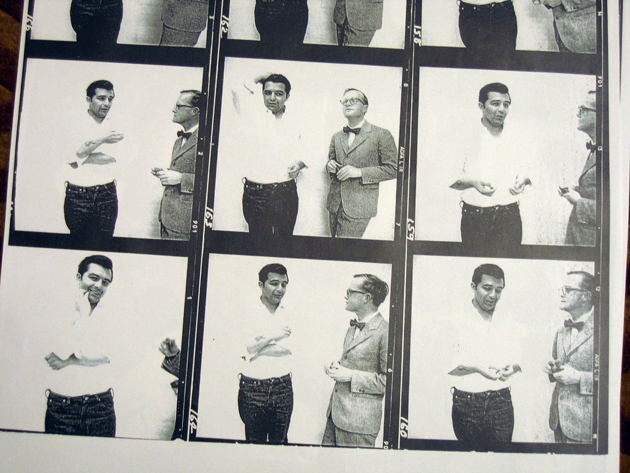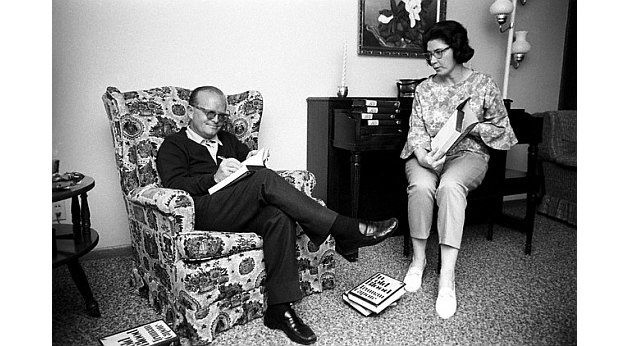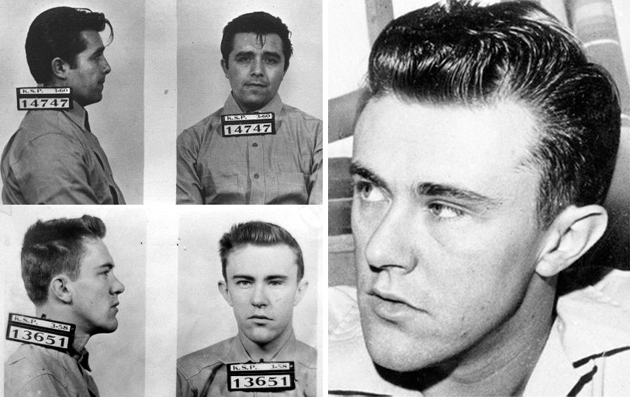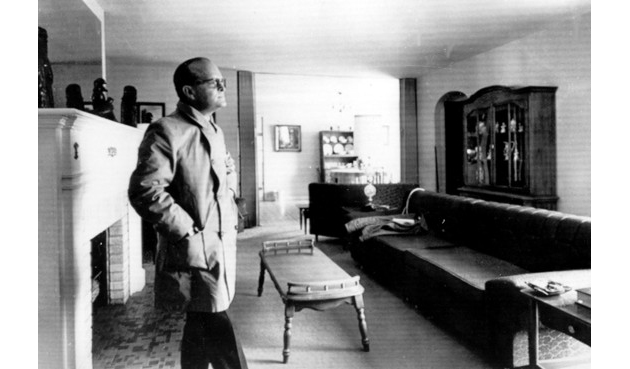Capote, Revised
If he were alive today Truman Capote would be thrilled to know that his true crime novel In Cold Blood is still making headlines. First came the news that Florida prosecutors were exhuming the bodies of Perry Smith and Dick Hickock — the novel’s killers who were convicted and hanged for murdering the Clutter family in Holcomb, Kansas in 1959 — for new DNA testing in connection to a similar murder that happened in Florida barely a month after the Clutter massacre. And now The Wall Street Journal has dug up an old legal document from the Kansas Bureau of Investigation that reveals what many of the book’s most vocal critics have suspected for years: that Capote altered facts and fabricated crucial elements in his story, in part to cast the novel’s protagonist, detective Alvin Dewey, in a more heroic light.

Along with the likes of Tom Wolfe, Gay Talese, and Norman Mailer, Truman Capote is often credited with the rise of New Journalism, a literary movement that boomed in the late 60s and gave birth to the idea that you could incorporate fictional techniques into fact-based journalism. “I got this idea of doing a really serious work,” Capote has said of In Cold Blood. “It would precisely be like a novel, with a single difference: every word of it would be true from beginning to end.”
With help from childhood friend Harper Lee, Capote spent five years meticulously researching and writing In Cold Blood, accumulating some 8,000 pages of notes in the process. During that time he and Lee struck up an unusually intimate friendship with Alvin Dewey, the lead detective on the Clutter case. Dewey gave Capote unprecedented access to the investigation, allowing him to frequently visit the murderers, view confidential documents, and even take a look at the contents of 16-year-old Nancy Clutter’s diaries. Dewey and his wife also persuaded many hesitant Garden City residents to talk to the famed author.

In return, Capote massaged a few key facts, one of which makes Dewey and the KBI appear more competent than they actually were. After nineteen days on the cold trail, Dewey and his men received a tip from Floyd Wells, a former cellmate of Dick Hickock, that eventually led to the murderers’ capture. In Capote’s version of events, Dewey acts immediately on the tip by sending a dispatch to Dick’s farmhouse that very night. In reality, according to the KBI document and Duane West, a former prosecutor in the case, Dewey initially dismissed the tip and waited five days before changing his mind and acting on it. “Alvin Dewey pooh-poohed the Wells tip,” West told the Journal. “He said Wells was a no-good criminal who made the whole thing up.”
Capote’s smudge is mostly inconsequential in that it didn’t change the outcome of the case. Dick and Perry were caught within six weeks, convicted in five months, and hanged in 1965. But the discovery makes fresh the central accusation that’s trailed In Cold Blood since it was published in 1965: that Capote changed the facts to suit his story. What’s more damaging is that the KBI continue to stand by Capote’s version of events, even though it’s now clear that his version contradicts their own department’s official records.

Dewey always maintained that he gave Capote the same treatment as every other journalist. “As far as showing him any favoritism or giving him any information, absolutely not,” Dewey said in an interview before his death in 1987. “He went out on his own and dug it up.” That’s not true. In their correspondence Capote frequently addresses Dewey as “Foxy”, expresses gratitude for being given Nancy Clutter’s diary entries, and even arranges for Dewey’s wife to be a consultant to the 1967 film version of the novel, which earned her $10,000. To say that their professional relationship was ethical is something of an understatement.
But Dewey did admit, in an interview with The Garden City Telegram, that the treatment people received in the novel largely depended on whether or not Truman liked them. Of those people, Dewey told the reporter, “I was the luckiest.”


